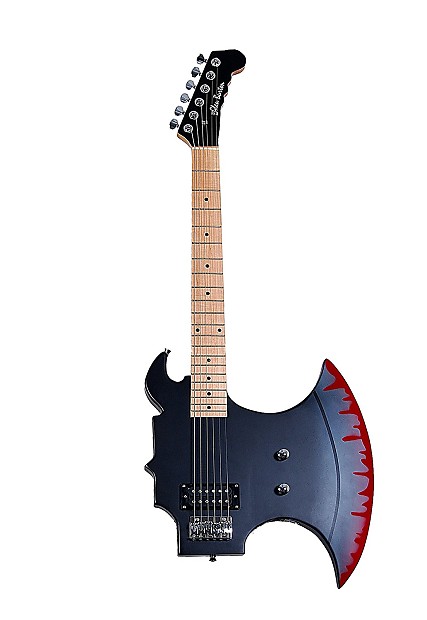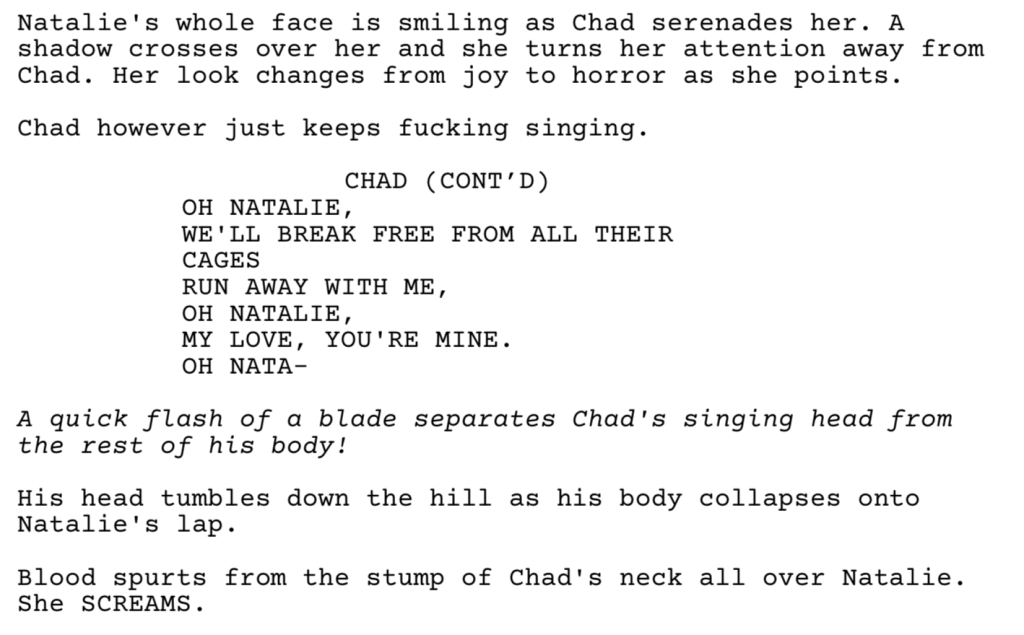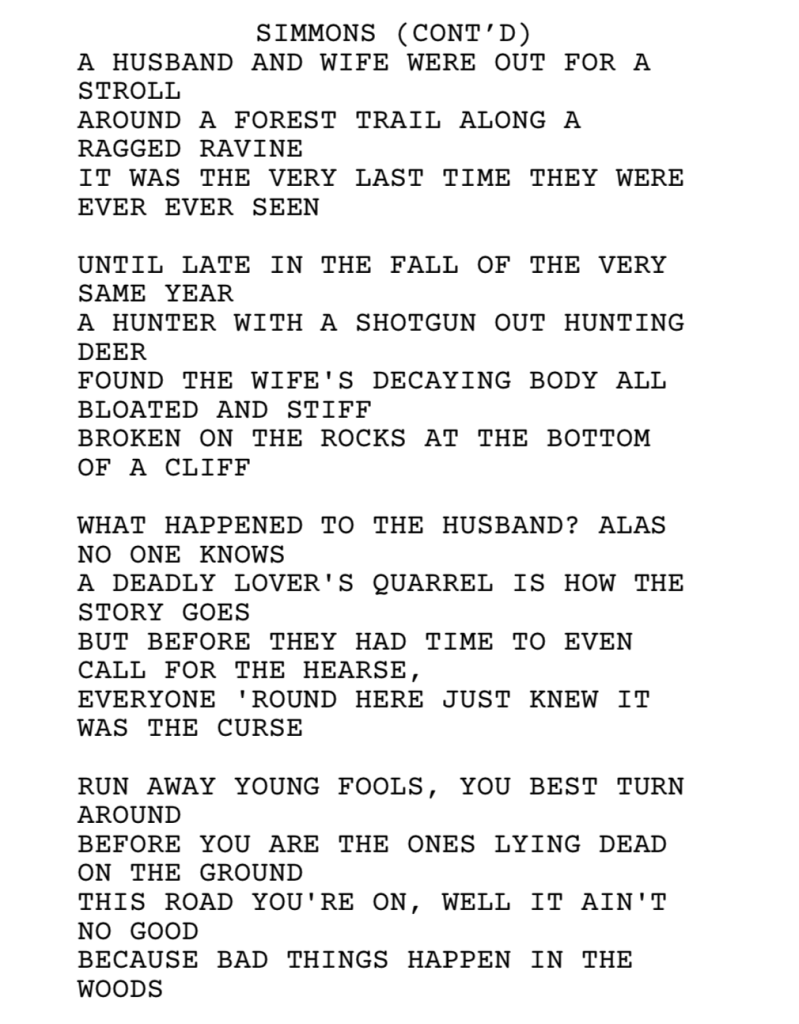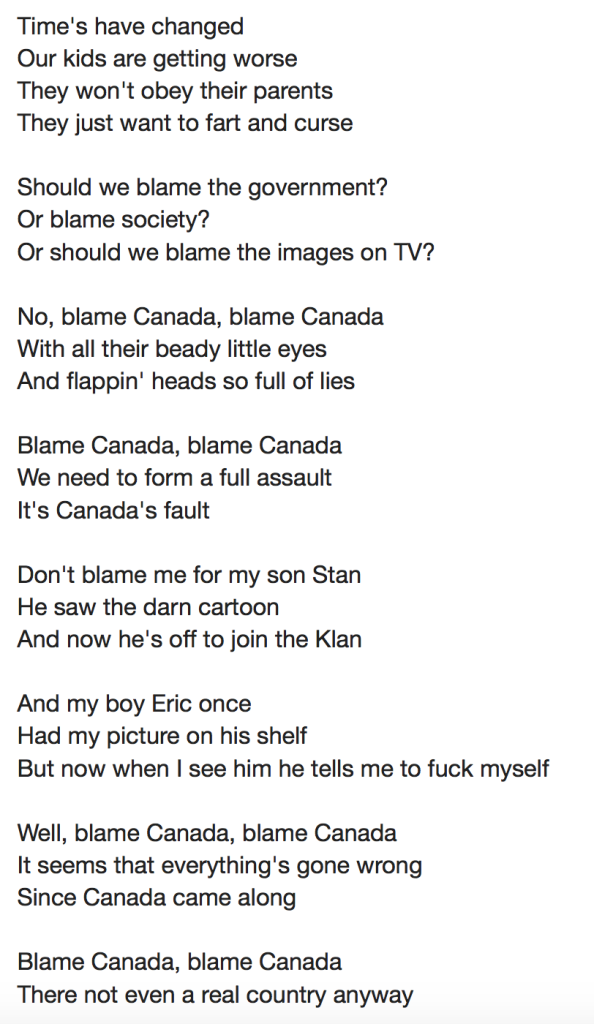Genre: Musical Horror Comedy
Premise: In 1985, an eager teen in search of an exciting summer signs up to work at a musical summer camp where counselors are stalked and murdered by an unknown assailant.
Why You Should Read: A Killer Musical is three things: a musical, a slasher movie, and a comedy, in that order. I wanted to have legitimate song and dance numbers to go along with the jump scares and brutal murders of a slasher film, all while keeping the humor from moving into Scary Movie territory where the characters behave as if they are aware that they are in a horror film. — This script is for everyone that has watched Friday the 13th and said to themselves, “Why aren’t there any song and dance numbers in this camp counselor murder romp?” — I’ve only been lurking Scriptshadow’s AOW for a short while and I haven’t seen a musical yet. Perhaps it’s time?
Writer: Chris Hicks
Details: 97 pages
As I lament the fact that I don’t have a Playstation 4 and therefore cannot play Red Dead Redemption 2 – sad face – I’m reminded that all is not lost. Maniac, by new Bond director Cary Fukunaga, debuts today on Netflix, and I’m going to be reviewing it Monday. The series is supposed to be unlike anything you’ve seen before, so it’ll be an interesting watch. Make sure to catch at least the pilot episode so you can participate in the discussion.
Speaking of unique ideas, we’ve got a true original one today with our Amateur Offerings winner. I can count the number of musicals I’ve reviewed on Scriptshadow on one hand (There’s La La Land, there’s Bob the Musical, there’s… any more?) and there’s a good reason for that. Musicals are the hardest genres to critique in the script stage. How can you adequately examine something without hearing the very portion that defines it – the music?? I don’t know. But I’m going to try!
It’s 1985. 17 year old virginesque Alyson has just accepted a counselor position at a brand new musical camp in the woods. She’ll be joining her chain-smoking slutty best friend, Nikki, who will be bringing along her boyfriend, Brett, and his hot best friend, Tommy, who Alyson immediately has eyes for.
The group will meet up with a second older group led by Mitch and Colleen, a couple who’s been in one endless fight since they got together, and the Tweedle-Dee and Tweedle-Dum of the gang, Lonnie and Danny. The goal is to get to the location and prepare it for camp, which will begin next week.
What nobody here knows is that the area of woods they’re going to is CURSED! People have been disappearing there since 1865. At least that’s what the psycho gas station attendant tells them. Needless to say, the second they show up, people start getting killed. A theater-masked assailant (half his mask a smiling face, the other half crying, with a stitching down the middle) who carries a makeshift axe welded to an old guitar frame begins killing the poor counselors one by one!
Oblivious to the mayhem, our Final Girl, Alyson, falls in love with Tommy, only to learn that he’s gay. And to make matters worse, after recovering from the embarrassment, she finds that half the group has disappeared. As she starts looking into the mysterious development, it becomes clear that they’re in serious danger. Can she use the power of song to escape? Or will she end up like everyone else in the crew, a one-hit wonder?
I’ve never truly understood the slasher formula.
The point is to create a group of characters we dislike enough that we want to see them killed, however, keep them just likable enough so that, in the meantime we’re not bored by them. I don’t know how you do that. And I suspect that that’s one of the reasons the genre fell out of favor in the 2000s. Audiences aren’t interested in watching movies where they don’t care if the characters live or die.
To revive the formula, you’re going to have to do something different. And give it to Chris Hicks for infusing the genre with just that – MUSIC!
I love this idea. It’s inherently ironic (singing chirpy songs while characters are brutally murdered) and provides the script with that “same but different” element executives are always pining for.
But ideas don’t matter unless the execution is in place. And I’m not sure the execution is there yet with A Killer Musical, beginning with the awkward setup. I went into this thinking that Alyson was one of the camp members, not a camp counselor. She was still in high school so it seemed like a logical assumption. Therefore it was very confusing when she got to the camp and started preparing it for other camp members. I kept thinking, “I’ve never gone to a camp where I had to first prepare the camp.” I eventually realized she was a counselor but that could’ve been clearer.
Once I got past that, I did like what Chris did. Having to prepare the camp gave the characters something to do. Lots of writers have trouble with this. They don’t give their characters any goals and therefore struggle to come up with things for them to do. As a result we get a lot of the cliche scenes like, “Wanna join me for a smoke on the porch,” or “Let’s play Truth or Dare.” By needing to prepare the place, you place the characters in a number of situations where they are isolated and can therefore encounter our stalker.
But what the success of this script really comes down to is: Are the songs enough to invigorate a tired concept? And in this iteration, I would say no. The reason being that while the songs are informative, they’re not clever enough. I was looking for more jokes in the song-writing, more clever asides. Instead, many of the songs were exposition-driven, and fairly straight-forward exposition at that.
The gold-standard for comedy musicals now is the South Park guys, Matt Stone and Trey Parker. These guys are so funny and their song-writing masters the art of being expositional, pushing the story along, AND throwing jokes in there. I wanted more of that in A Killer Musical. Here’s one of their most famous songs, Blame Canada.
To Chris’s credit, he does let loose, but it happens too late – all the way in the third act. One of my favorite moments in the script was when a couple of dead characters reanimate and start sing-narrating Alyson’s escape sequence. It was fun and clever – exactly what I was looking for. But it was TOO DAMN LATE. I was like, “Where was this at the beginning??” And while I understand the need to build up to that moment, I felt Chris took too long to get there. I mean, this is a SLASHER MUSICAL. We expect crazy. You can start giving it to us earlier.
I will say I liked the killer. I liked that his main weapon was music-inspired. I thought the mask was great. These movies are so dependent on the mask because that’s what’s going to be used to market the film and a good mask can get you 10 million bucks on opening weekend. And I loved that the kills were musical-inspired. My favorite was him sneaking up on a character with cymbals and then slamming them together on her head, exploding it like a watermelon. Only thing that was missing was him saying, “Well that was cymbollic.”
But for a script with a hook this zany, it was surprisingly tame for the majority of its running time. If I were Chris, I would go back through this and let loose, particularly with the song lyrics. I think this script is worth pursuing because I can see it as a movie. But the author needs to un-muzzle himself and deliver on the promise of the premise much earlier than the third act.
Script link: A Killer Musical
[ ] What the hell did I just read?
[x] wasn’t for me
[ ] worth the read
[ ] impressive
[ ] genius
What I learned: Readers loooooooove scripts with this much dialogue. When a reader sees a script like this, it’s heaven. They know that their read time has just been cut down by half an hour, possibly more. I’m not saying that every script should have tons of dialogue. I’m only saying that if all else is equal and you’re trying to decide between a dialogue-driven script and a description-driven script, pick the dialogue one.





